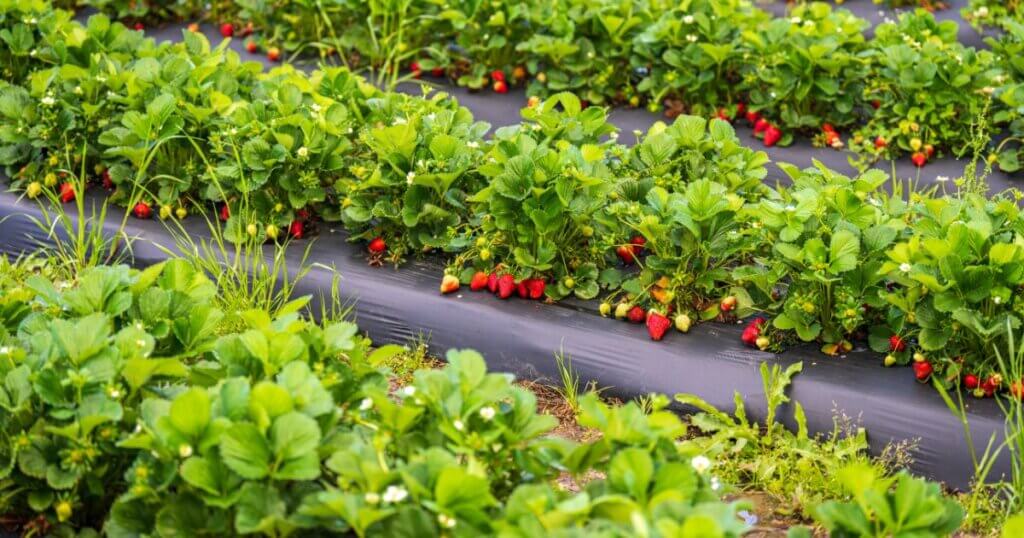Urban Farming: A Game-Changer for Food Security, Sustainability, and Community Growth

Some of the links in this post are affiliate links. As an Amazon Associate, we earn a referral fee from qualifying purchases—at no extra cost to you.
In a rapidly urbanizing world, urban farming has gained significant momentum. Urban farming refers to cultivating, processing, and distributing food within urban areas. It offers a sustainable solution to food security challenges, environmental degradation, and limited access to fresh produce. In this article, we will explore the benefits and potential of urban farming, along with various methods and initiatives that contribute to a greener future.
Table of Contents
The Importance of Urban Farming
1. Addressing Food Security Challenges
Urban farming is vital in ensuring food security within densely populated areas. By cultivating food within the city limits, urban farmers reduce the dependence on long-distance transportation and decrease the vulnerability of food supply chains. Community gardens and rooftop gardens enable residents to grow nutritious produce, promoting self-sufficiency and reducing the risk of food deserts.
2. Environmental Benefits of Urban Farming
Urban farming significantly contributes to environmental sustainability. By converting vacant lots, rooftops, and unused spaces into green areas, urban farming mitigates the urban heat island effect and enhances air quality. Plants absorb carbon dioxide, reducing greenhouse gas emissions while providing a habitat for beneficial insects and birds. Additionally, urban farms often employ sustainable practices such as composting, rainwater harvesting, and organic cultivation, minimizing the use of harmful chemicals.
3. Promoting Community Engagement
Urban farming fosters a sense of community and brings people together. Community gardens provide a space for neighbours to collaborate, share knowledge, and build social connections. Engaging in urban farming enhances community cohesion, encourages intergenerational interactions, and promotes a healthier lifestyle. It also serves as a platform for educational initiatives, teaching individuals about sustainable agriculture, nutrition, and the importance of locally sourced food.
Methods of Urban Farming
1. Vertical Farming
Vertical farming involves growing crops in vertically stacked layers, utilizing indoor spaces and employing hydroponic or aeroponic systems. This method maximizes space efficiency, enabling cultivation in high-rise buildings and urban environments with limited land availability. Vertical farms optimize plant growth and minimize water usage by controlling light, temperature, and nutrient levels. This innovative approach allows year-round production and reduces the impact of adverse weather conditions.
If you’re curious about starting your own vertical garden at home, a great option is the AeroGarden Harvest Indoor Garden. It’s a compact, hydroponic vertical system that lets you grow fresh herbs and vegetables indoors year-round, making it perfect for beginners and small urban spaces.
2. Aquaponics
Aquaponics is a sustainable method that combines aquaculture (fish farming) with hydroponics (soil-less plant cultivation). The waste produced by fish provides nutrients for plants, while the plants filter the water, creating a symbiotic ecosystem. This closed-loop system minimizes water waste and requires fewer inputs than traditional farming methods. Aquaponics can be implemented in urban areas, promoting the efficient use of space and reducing the environmental impact of conventional agriculture.
3. Rooftop Gardens
Rooftop gardens are gaining popularity as a means of utilizing underutilized urban spaces. By transforming rooftops into green oases, cities can mitigate the urban heat island effect, improve energy efficiency, and enhance biodiversity. Rooftop gardens can accommodate various crops, including vegetables, herbs, and small fruit trees. They also provide opportunities for urban dwellers to engage in gardening activities, reap the benefits of fresh produce, and enjoy the tranquillity of green spaces.
If you’re interested in trying out aquaponics for yourself, there are a few different starter kits available on Amazon. We recommend the Back to the Roots Indoor Aquaponic Garden because it’s a simple kit that combines a fish tank and a herb garden, ideal for beginners wanting to experience the aquaponic cycle at home.
4. Community Gardens
Community gardens are collaborative projects where individuals or groups collectively cultivate and maintain a shared piece of land. These gardens serve as valuable community assets, allowing participants to grow food, share resources, and develop a sense of belonging. Community gardens foster education, skill-building, and healthy food access, particularly in areas with limited access to fresh produce. These vibrant spaces often host workshops, events, and social gatherings, promoting social cohesion and sustainable living.
Urban Farming Initiatives: Success Stories
1. The High Line Farm, New York City, USA
The High Line Farm is a remarkable example of urban farming in New York City. This elevated linear park was transformed into a productive urban farm, producing a variety of vegetables, herbs, and flowers. The project provides fresh produce to the local community and educates visitors about sustainable farming practices. By integrating urban farming into a popular tourist attraction, the High Line Farm showcases the potential of utilizing unconventional spaces for agriculture.
2. The Incredible Edible Network, Todmorden, UK
Todmorden, a small town in the UK, pioneered the Incredible Edible movement, transforming the town into an edible landscape. The community launched initiatives to grow food in public spaces, encouraging residents to plant fruit and vegetable trees along streets, in parks, and outside the police station. This grassroots movement promotes food self-sufficiency, community resilience, and sustainability. The town has become a model for other communities looking to implement similar initiatives.
3. Singapore’s Sky Greens Vertical Farm
Singapore, known for its limited land resources, has successfully implemented vertical farming on a commercial scale. The Sky Greens Vertical Farm utilizes rotating tiers to maximize space and sunlight exposure, enabling the cultivation of leafy greens. This innovative approach addresses Singapore’s food security concerns and reduces its reliance on imported produce. The farm’s integration into the urban landscape showcases the potential of vertical farming to transform densely populated cities.
Conclusion
Urban farming represents a transformative approach to sustainable agriculture, addressing food security, environmental concerns, and community engagement. By utilizing innovative methods such as vertical farming, aquaponics, rooftop gardens, and community gardens, urban farmers contribute to a greener future. These initiatives provide access to fresh and nutritious produce, foster social connections, promote education, and enhance urban biodiversity. Embracing urban farming is essential for building resilient cities and cultivating a sustainable future for future generations.
FAQs – Urban Farming
1. What is urban farming, and how does it differ from traditional farming?
Urban farming refers to the practice of growing food in cities using innovative techniques like vertical farming, aquaponics, rooftop gardens, and community gardens. Unlike traditional farming, which relies on large rural land areas, urban farming utilizes small, underutilized spaces in densely populated areas, making food production more localized and sustainable.
2. How does urban farming help with food security?
Urban farming increases food security by reducing dependence on long-distance food transportation and supply chains. By growing fresh produce within cities, communities can access healthier food options, reduce the impact of food deserts, and promote self-sufficiency, ensuring a stable food supply even in times of crisis.
3. What are the environmental benefits of urban farming?
Urban farming helps combat climate change by reducing carbon emissions from food transportation, absorbing CO₂, and mitigating the urban heat island effect. Additionally, sustainable practices such as composting, rainwater harvesting, and organic farming minimize waste and pollution, contributing to a healthier urban environment.
4. Can urban farming be profitable?
Yes, urban farming can be a profitable venture. Businesses and entrepreneurs are investing in innovative urban farming methods like hydroponics and vertical farming, which maximize production in small spaces. Local markets, restaurants, and grocery stores often support urban farms, creating economic opportunities while promoting sustainable food systems.
5. How can individuals get involved in urban farming?
Individuals can start small by growing herbs and vegetables in their homes, balconies, or rooftops. They can also join community gardens, volunteer at local urban farms, or support urban agriculture initiatives. Educational workshops and online resources guide sustainable urban farming techniques for beginners.
Other Useful Resources Related To Urban Farming
- Social and Community Benefits and Limitations of Urban Agriculture
- Urban Agriculture Combats Food Insecurity, Builds Community
- Urban Horticulture
- Does Urban Agriculture Improve Food Security?
- Food for Thought: Addressing Urban Food Security Risks through Urban Agriculture
Other Interesting Urban Farming Videos



